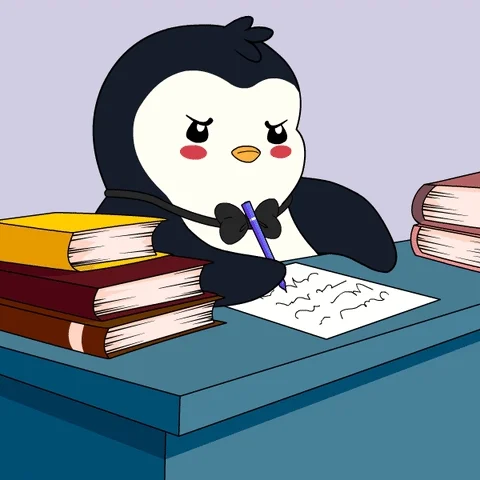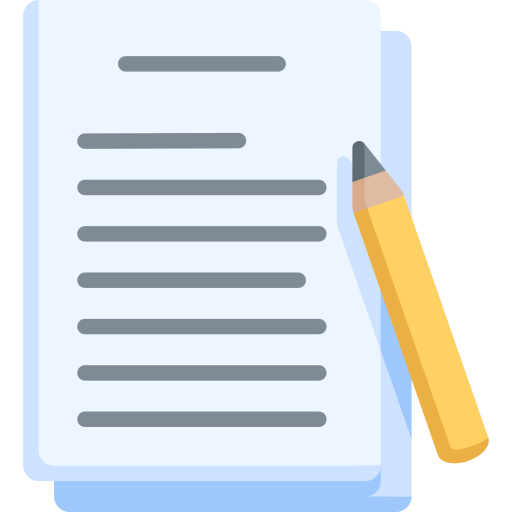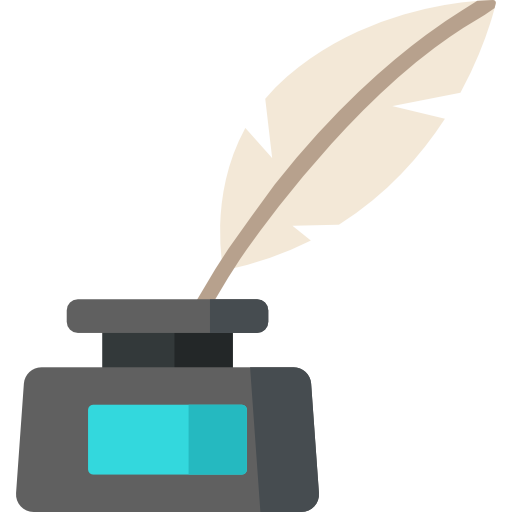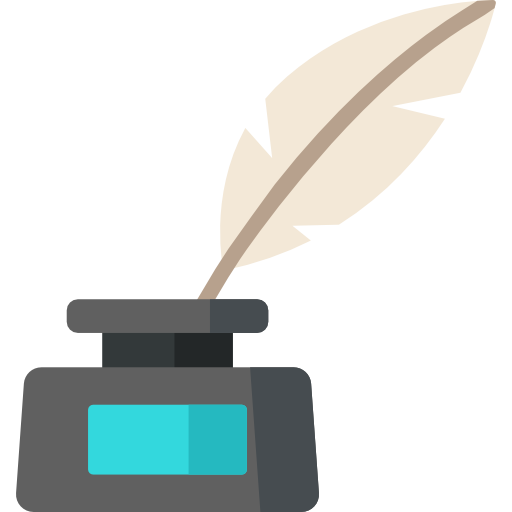
This logo isn't an ad or affiliate link. It's an organization that shares in our mission, and empowered the authors to share their insights in Byte form.
Rumie vets Bytes for compliance with our
Standards.
The organization is responsible for the completeness and reliability of the content.
Learn more
about how Rumie works with partners.
Has someone ever taken credit for your work? How does it make you feel?
That’s what happens when you use a source to write a paper but don’t cite and reference the author of the source. Citing credible sources avoids plagiarism, builds your credibility, and provides context for your readers.
Cite as you write so that your paper and list of sources are finished at the same time.

Citation and Reference Details
A citation is used in the body of a paper, and a reference is used in the list of sources at the end of a paper. Follow the formatting style specified by your instructor.

Parenthetical citations include the author's name unless the author's name is used in the same sentence as the citation.

References are alphabetized and formatted with hanging indents. Each style has a different name for the list of sources.
E-Books
Citations for e-books are written the same as for print books. For the list of sources, some styles require the word "e-book" to be included in the reference, and some require the URL or database link of the source. Check the current edition of the style manual.
Did you know?
In MLA, APA, and Harvard style, every citation needs a corresponding reference at the end of the paper, and every reference needs one or more corresponding citations.
MLA
Works Cited 📖
In MLA style, the source list is called Works Cited. The book title is written in title case (every word capitalized except for articles and prepositions).
Basic Format
Last Name, First Name. Title of Book: Subtitle. # ed., Publisher's Name, Publication Date.
Print Book with Two Authors
Creswell, John W., and Timothy C. Guetterman. Educational Research: Planning, Conducting, and Evaluating Quantitative and Qualitative Research. 6th ed., Pearson, 2019.
APA
 In-Text Citations ✏️
In-Text Citations ✏️
An APA citation for a book is written as follows:
author's last name (or name of the organization)
publication date
page number(s) for direct quotes but not for paraphrases
Use "p." for one page and "pp." for multiple pages. A comma separates the author's name, the date, and the page number.
Example
Your research method will affect the writing style of the final report (Creswell & Guetterman, 2019).
References 📖
In APA style, the source list is called References. The book title is written in lowercase except for proper nouns, the first word of the title, and the first word of the subtitle.
Basic Format
Last Name, Initial(s). (Publication Date). Title of book: Subtitle (# ed.). Publisher's Name. Digital Object Identifier (DOI) if available
Print Book with Two Authors
Creswell, J. W., & Guetterman, T. C. (2019). Educational research: Planning, conducting, and evaluating quantitative and qualitative research (6th ed.). Pearson.
Chicago: Author-Date
 In-Text Citations ✏️
In-Text Citations ✏️
Chicago style has two systems: Author-Date (for sciences and social sciences) and Notes and Bibliography (for humanities).
An Author-Date citation for a book is written as follows:
author's last name (or name of the organization)
publication date
page number(s) for both direct quotes and paraphrases
A comma separates the date and the page number.
Example
Your research method will affect the writing style of the final report (Creswell and Guetterman 2019, 11).
Reference List 📖
In the Author-Date system, the source list is called Reference List. The book title is written in title case (every word capitalized except for articles and prepositions).
Basic Format
Last Name, First Name Middle Initial. Publication Date. Title of Book: Subtitle. # ed. Publisher's Location: Publisher's Name.
Print Book with Two Authors
Creswell, John W., and Timothy C. Guetterman. 2019. Educational Research: Planning, Conducting, and Evaluating Quantitative and Qualitative Research. 6th ed. New Jersey: Pearson.
Did you know?
Turabian is a simplified version of Chicago style. Book citations and references in Turabian look the same as in Chicago.
Chicago: Notes and Bibliography
 In-Text Citations ✏️
In-Text Citations ✏️
The Notes and Bibliography system uses footnotes and endnotes rather than parenthetical citations. A note is indicated by a small (superscript) number above a word and a numbered entry in the page footer. Cite both direct quotes and paraphrases.
Use the note format the first time you cite the source, and if you cite the same source again, use the shortened note and the specific page number. Usually, every source also requires a bibliography entry.
Example
Your research method will affect the writing style of the final report.¹
Note
1. John W. Creswell and Timothy C. Guetterman, Educational Research: Planning, Conducting, and Evaluating Quantitative and Qualitative Research (New Jersey: Pearson, 2019), 7-22.
Shortened Note
2. Creswell and Guetterman, Educational Research, 11.
Bibliography 📖
In the Notes and Bibliography system, the source list is called Bibliography. The book title is written in title case (every word capitalized except for articles and prepositions).
Basic Format
Last Name, First Name Middle Initial. Title of Book: Subtitle. # ed. Publisher's Location: Publisher's Name. Publication Date.
Print Book with Two Authors
Creswell, John W., and Timothy C. Guetterman. Educational Research: Planning, Conducting, and Evaluating Quantitative and Qualitative Research. 6th ed. New Jersey: Pearson, 2019.
Harvard

In-Text Citations ✏️
A Harvard citation for a book is written as follows:
author's last name (or name of the organization)
publication date
page number(s) for direct quotes but not for paraphrases
Use "p." for one page and "pp." for multiple pages. A comma separates the author's name, the date, and the page number.
Example
Your research method will affect the writing style of the final report (Creswell and Guetterman, 2019).
Reference List 📖
In Harvard style, the source list is called Reference List. The book title is written in lowercase except for proper nouns, the first word of the title, and the first word of the subtitle.
Basic Format
Last Name, Initial(s). (Publication Date). Title of book: Subtitle. # edn. Publisher's Location: Publisher's Name.
Print Book with Two Authors
Creswell, J. W., and Guetterman, T. C. (2019). Educational research: Planning, conducting, and evaluating quantitative and qualitative research. 6th edn. New Jersey: Pearson.
Summary
 For classwork, you won't need to memorize the details of each style because your instructor will tell you which one to use.
For classwork, you won't need to memorize the details of each style because your instructor will tell you which one to use.
 MLA
MLA
Citation: (Last Name #)
Reference: Last Name, First Name. Title of Book: Subtitle. # ed., Publisher's Name, Publication Date.
 APA
APA
Citation: (Last Name, Date)
Reference: Last Name, Initial(s). (Publication Date). Title of book: Subtitle (# ed.). Publisher's Name. DOI if available
 Chicago
Chicago
Author-Date Citation: (Last Name Date, #)
Author-Date Reference: Last Name, First Name Middle Initial. Publication Date. Title of Book: Subtitle. # ed. Publisher's Location: Publisher's Name.
Notes and Bibliography Citation: Here is some text.¹
Notes and Bibliography Reference: Last Name, First Name Middle Initial. Title of Book: Subtitle. # ed. Publisher's Location: Publisher's Name, Publication Date.
 Harvard
Harvard
Citation: (Last Name, Date)
Reference: Last Name, Initial(s). (Publication Date). Title of book: Subtitle. # edn. Publisher's Location: Publisher's Name.
Quiz
You read this citation: (2009, p. 78). Assume there are no missing elements. What can you conclude about the citation and author? Select all that apply.
The author’s name isn’t included in a citation when the author is mentioned in the same sentence, and direct quotes require a page number. MLA citations don’t include the publication date. Since the citation is out of context, you can’t know whether the author is an individual or an organization.
Take Action

This Byte has been authored by
Lucy Sotak
Instructional Designer | E-Learning Developer
Master's degree

